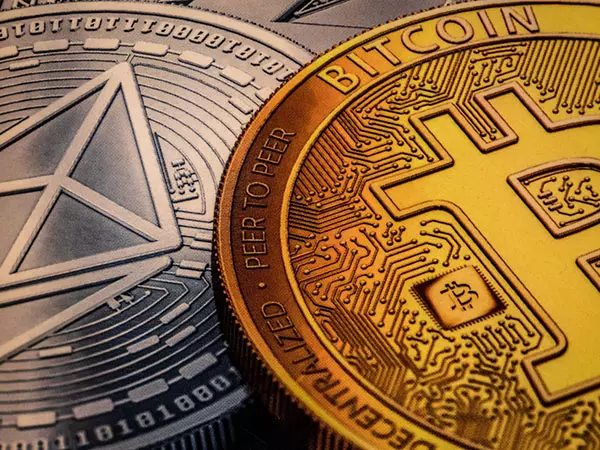Nyheter och tradingidéer
Nyheter och tradingidéer
-
Halvering på väg – kan bitcoin få förnyad kraft?
En halvering av kryptovalutan har länge målats upp som en trigger för ytterligare uppgång i bitcoin. Nu är det dags och frågan är om priset kan fortsä...2024-04-15T09:43:28+0100 -
Bottenkänning i råvaruförloraren?
2024-04-09T13:16:00+0100 -
Styrka i oljepriset
2024-04-04T12:17:14+0100 -
Centralbankerna bunkrar fysiskt guld
2024-04-02T12:51:40+0100
Valuta
-
Centralbankerna bunkrar fysiskt guld
Guldpriset fortsätter att trenda starkt uppåt. De värdebevarande attributen (bra inflationsskydd) gör ädelmetallen uppenbarligen fortsatt eftertraktad...2024-04-02T12:51:40+0100 -
Öppettider för valutahandel: Populära tider för trading med valutor
2024-03-12T11:24:40+0000 -
Vad är trading hemifrån och hur kommer du igång?
2024-03-12T11:21:39+0000 -
Trading vid dagens slut: vad är det och hur fungerar det?
2024-03-12T11:04:51+0000
Aktier
-
Bottenkänning i råvaruförloraren?
Vi fick en positiv start på veckan med OMX upp 0,7 %. SBB, Getinge och Nibe i topp, Essity i botten. De sistnämnda är verkligen en lagger som man vänt...2024-04-09T13:16:00+0100 -
Hur du handlar eller investerar i VR-teknik
2024-03-12T11:14:43+0000 -
Så väljer du populära oljeaktier
2024-03-12T10:59:47+0000 -
Vad är memaktier och hur handlar du dem?
2023-04-05T15:49:57+0100
Index
-
Vad är volatilitet på aktiemarknaden?
Det här är din heltäckande guide till aktievolatilitet. Lär dig vad det är, hur det mäts och hur du kan handla med det.2024-03-12T11:22:47+0000 -
Vad är trading hemifrån och hur kommer du igång?
2024-03-12T11:21:39+0000 -
Vad är blue-chip-aktier och hur investerar man eller handlar med dem?
2024-03-12T11:20:43+0000 -
ETF:er med hävstång: vad är det och hur fungerar det?
2024-03-12T11:18:31+0000

Prenumerera på
IG:s Morgonrapport
Prenumerera på rapporten som skrivs av IG:s marknadsanalytiker Carl-Henrik Söderberg. Då får du den till din e-post varje vardagsmorgon innan börsöppning.
- Håll dig uppdaterad med de viktigaste händelserna
- Få inspiration och kunskap om marknaden
- Följ Carl-Henrik Söderbergs åsikter om börsläget
Realtidskurser på populära marknader
- Valuta
- Aktier
- Index
Webbplatsens villkor gäller för kurserna ovan. Alla aktiekurser är fördröjda med minst 15 minuter.
Tweets by @IGSverige
bitcoin
-
Hur man blankar kryptovaluta
Marknaden för kryptovalutor är extremt volatil, vilket kan öppna upp för tradingmöjligheter – även när kursen på kryptovalutan i fråga går ner. Läs me...2023-05-12T10:21:02+0100
Råvaror
-
Energihandel: vad är det och hur kan du handla eller investera?
Energihandel innebär att man köper och säljer olika energiråvaror för att kunna dra nytta av prisförändringar. Hos oss kan du handla olja, naturgas oc...2024-03-12T11:23:51+0000 -
Så väljer du populära oljeaktier
2024-03-12T10:59:47+0000 -
Den gyllene standarden: guldkurs och hedgingstrategier mot inflation
2023-07-21T08:45:39+0100 -
Vad är börshandlade råvaror (ETC:er) och hur kan du handla dem?
2023-05-11T08:54:25+0100 -
Vad är inflation och hur fungerar den?
2023-05-02T09:25:33+0100
Du kanske är intresserad av …
Handla optioner, barriers eller CFDs - bestäm vilken av våra produkter som är bäst för dig.
Upptäck varför så många kunder väljer oss, och vad som gör oss till en världsledande leverantör av CFDs.
Ta reda på vilka avgifter dina affärer leder till med vår transparenta avgiftsstruktur.
















